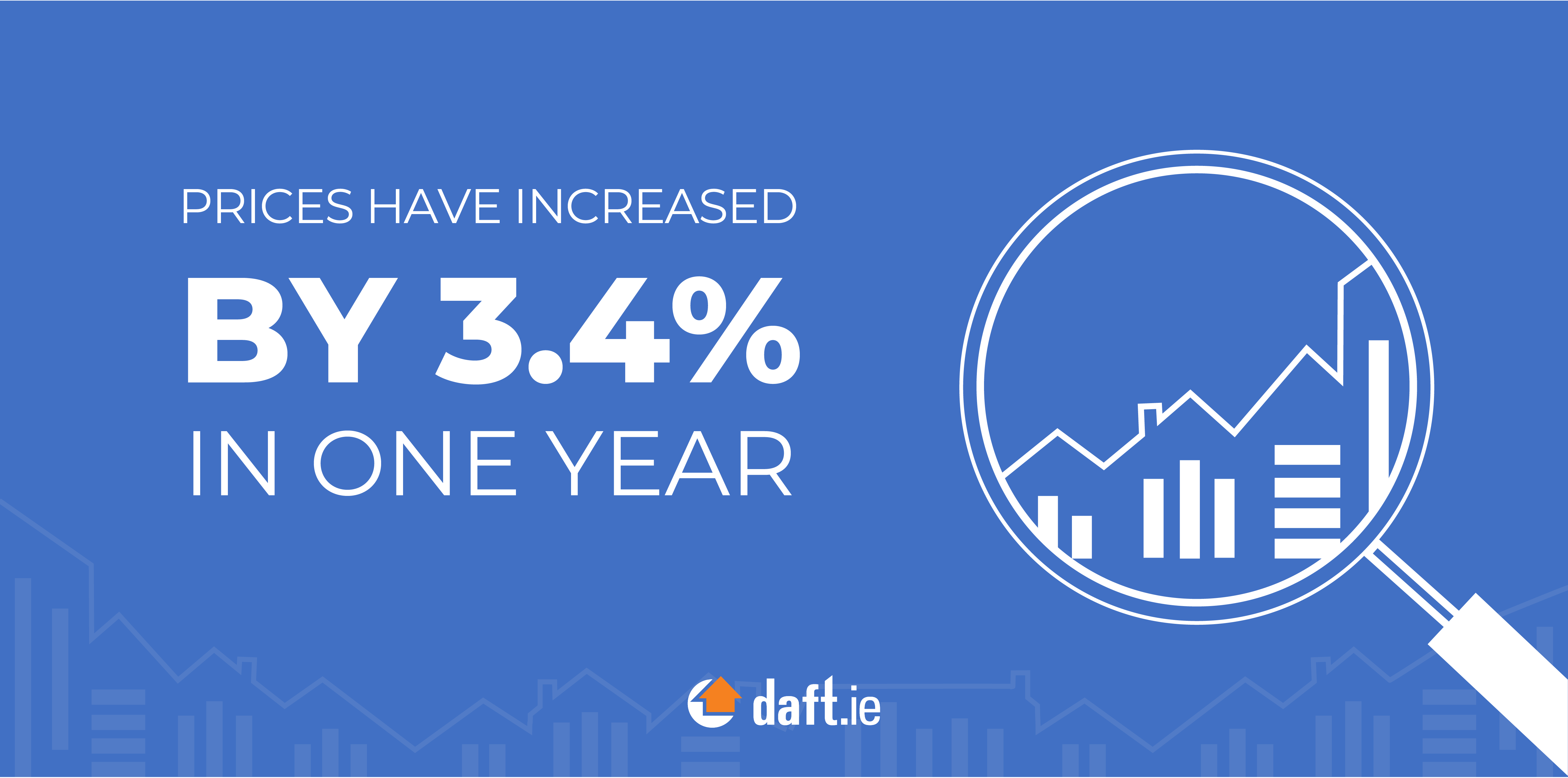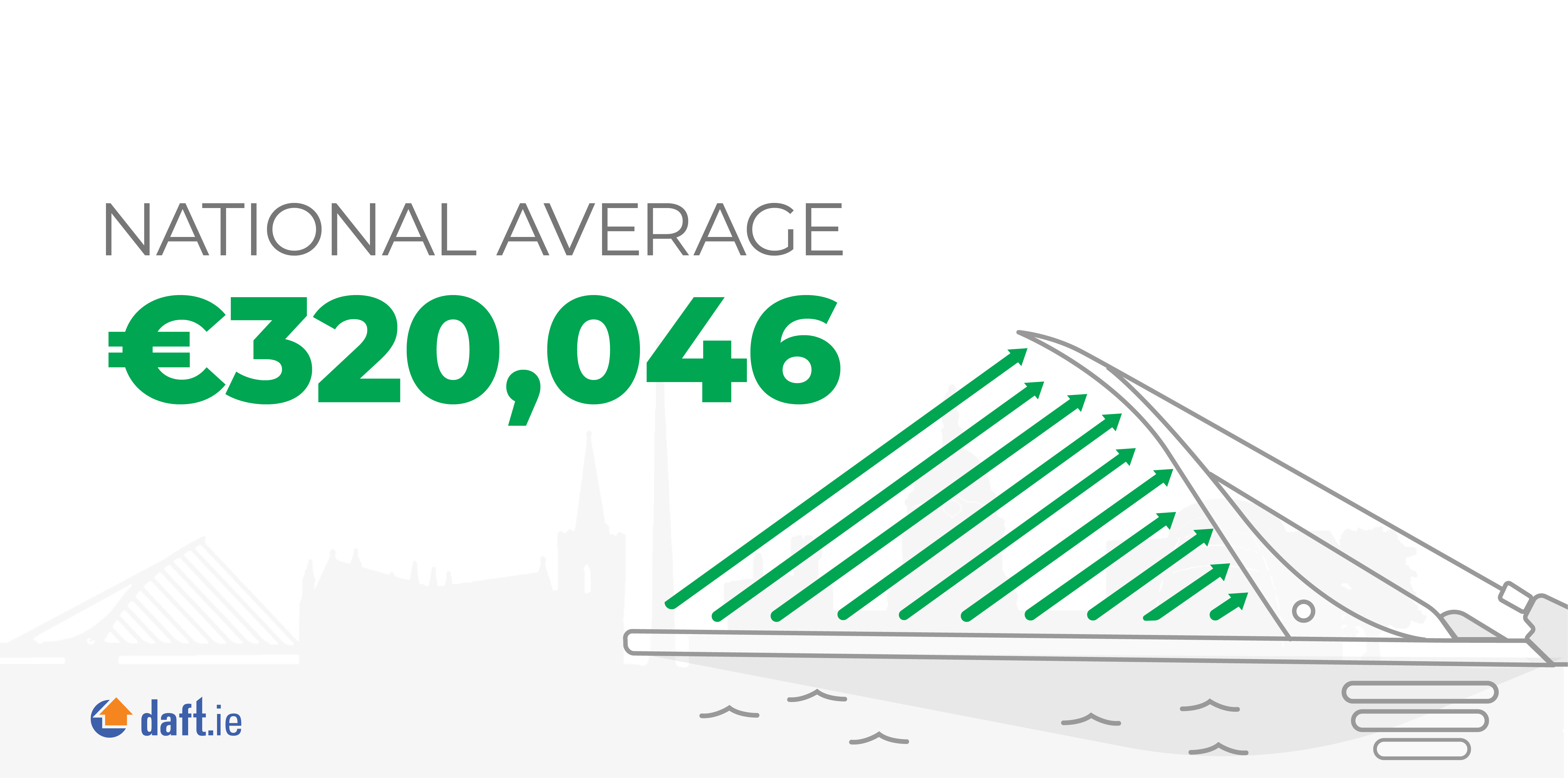Irish House Price Report Q4 2023 | Daft.ie
Daft Reports
- Ronan Lyons (House Price, Q1 2024)
- Ronan Lyons (Rental Price, Q4 2023)
- Ronan Lyons (House Price, Q4 2023)
- Ronan Lyons (Rental Price, Q3 2023)
- Ronan Lyons (House Price, Q3 2023)
- Ronan Lyons (Rental Price, Q2 2023)
- Ronan Lyons (House Price, Q2 2023)
- Ronan Lyons (Rental Price, Q1 2023)
- Ronan Lyons (House Price, Q1 2023)
- Ronan Lyons (Rental Price, Q4 2022)
- Ronan Lyons (House Price, Q4 2022)
- Ronan Lyons (Rental Price, Q3 2022)
- Ronan Lyons (House Price, Q3 2022)
- Ronan Lyons (Rental Price, Q2 2022)
- Ronan Lyons (House Price, Q2 2022)
- Ronan Lyons (Rental Price, Q1 2022)
- Ronan Lyons (House Price, Q1 2022)
- Ronan Lyons (Rental, Q4 2021)
- Ronan Lyons (House Price, Q4 2021)
- Ronan Lyons (Rental, Q3 2021)
- Ronan Lyons (House Price, Q3 2021)
- Ronan Lyons (Rental, Q2 2021)
- Ronan Lyons (House Price, Q2 2021)
- Ronan Lyons (Rental, Q1 2021)
- Ronan Lyons (House Price, Q1 2021)
- Ronan Lyons (Rental, Q4 2020)
- Ronan Lyons (House Price, Q4 2020)
- Ronan Lyons (Wealth, H2 2020)
- Ronan Lyons (Rental, Q3 2020)
- Ronan Lyons (House Price, Q3 2020)
- Ronan Lyons (Housing, July 2020)
- Ronan Lyons (Housing, June 2020)
- Ronan Lyons (Housing, May 2020)
- Ronan Lyons (Rental, Q1 2020)
- Ronan Lyons (House Price, Q1 2020)
- Ronan Lyons (Rental, Q4 2019)
- Ronan Lyons (House Price, Q4 2019)
- Ronan Lyons (Wealth, H2 2019)
- Ronan Lyons (Rental, Q3 2019)
- Ronan Lyons (House Price, Q3 2019)
- Pierre Yimbog (Rental, Q2 2019)
- Ronan Lyons (House Price, Q2 2019)
- Ronan Lyons (Wealth, H1 2019)
- Ronan Lyons (Rental, Q1 2019)
- Ronan Lyons (House Price, Q1 2019)
- Ronan Lyons (Rental, Q4 2018)
- Ronan Lyons (House Price, Q4 2018)
- Ronan Lyons (Wealth, H2 2018)
- Ronan Lyons (Rental, Q3 2018)
- Ronan Lyons (House Price, Q3 2018)
- Shane De Rís (Rental, Q2 2018)
- Ronan Lyons (House Price, Q2 2018)
- Ronan Lyons (Wealth, 2018)
- Ronan Lyons (Rental, Q1 2018)
- Ronan Lyons (House Price, Q1 2018)
- Ronan Lyons (Rental, Q4 2017)
- Ronan Lyons (House Price, Q4 2017)
- Ronan Lyons (Rental, Q3 2017)
- Ronan Lyons (House Price, Q3 2017)
- Katie Ascough (Rental, Q2 2017)
- Ronan Lyons (Wealth, 2017)
- Ronan Lyons (House Price, Q2 2017)
- Ronan Lyons (Rental, Q1 2017)
- Ronan Lyons (House Price, Q1 2017)
- Ronan Lyons (Rental, Q4 2016)
- Ronan Lyons (House Price, Q4 2016)
- Ronan Lyons (Rental, Q3 2016)
- Ronan Lyons (House Price, Q3 2016)
- Ronan Lyons (School Report, 2016)
- Conor Viscardi (Rental, Q2 2016)
- Ronan Lyons (Rail Report, 2016)
- Ronan Lyons (House Price, Q2 2016)
- Ronan Lyons (Rental, Q1 2016)
- Ronan Lyons (House Price, Q1 2016)
- Ronan Lyons (Rental, Q4 2015)
- Ronan Lyons (House Price, Q4 2015)
- Ronan Lyons (Rental, Q3 2015)
- Ronan Lyons (House Price, Q3 2015)
- Marcus O'Halloran (Rental, Q2 2015)
- Ronan Lyons (House Price, Q2 2015)
- Ronan Lyons (Rental, Q1 2015)
- Ronan Lyons (House Price, Q1 2015)
- Ronan Lyons (Rental, Q4 2014)
- Ronan Lyons (House Price, Q4 2014)
- Ronan Lyons (Rental, Q3 2014)
- Ronan Lyons (House Price, Q3 2014)
- Domhnall McGlacken-Byrne (Rental, Q2 2014)
- Ronan Lyons (House Price, Q2 2014)
- Ronan Lyons (Rental, Q1 2014)
- Ronan Lyons (House Price, Q1 2014)
- Ronan Lyons (Rental, Q4 2013)
- Ronan Lyons (House Price, Q4 2013)
- Ronan Lyons (Rental, Q3 2013)
- Ronan Lyons (House Price, Q3 2013)
- Ronan Lyons (Rental, Q2 2013)
- Ronan Lyons (House Price, Q2 2013)
- Ronan Lyons (Rental, Q1 2013)
- Ronan Lyons (House Price, Q1 2013)
- Ronan Lyons (Rental, Q4 2012)
- Ronan Lyons (House Price, Q4 2012)
- Lorcan Sirr (Rental, Q3 2012)
- Padraic Kenna (House Price, Q3 2012)
- John Logue (Rental, Q2 2012)
- Ronan Lyons (House Price, Q2 2012)
- Barry O'Leary (Rental, Q1 2012)
- Seamus Coffey (House Price, Q1 2012)
- Joan Burton (Rental, Q4 2011)
- Ronan Lyons (House Price, Q4 2011)
- Philip O'Sullivan (Rental, Q3 2011)
- Sheila O'Flanagan (House Price, Q3 2011)
- Rachel Breslin (Rental, Q2 2011)
- Constantin Gurdgiev (House Price, Q2 2011)
- Cormac Lucey (Rental, Q1 2011)
- Eoin Fahy (House Price, Q1 2011)
- Lorcan Roche Kelly (Rental, Q4 2010)
- Ronan Lyons (House Price, Q4 2010)
- John Fitzgerald (Rental, Q3 2010)
- Patrick Koucheravy (House Price, Q3 2010)
- Gary Redmond (Rental, Q2 2010)
- Jim Power (House Price, Q2 2010)
- Jill Kerby (Rental, Q1 2010)
- Brian Lucey (House Price, Q1 2010)
- Michael Taft (Rental, Q4 2009)
- Alan McQuaid (House Price, Q4 2009)
- Dr. Charles J. Larkin (Rental, Q3 2009)
- Emer O'Siochru (House Price, Q3 2009)
- Ronan Lyons (Rental, Q2 2009)
- Oliver Gilvarry (House Price, Q2 2009)
- Brian Devine (Rental, Q1 2009)
- Dr. Liam Delaney (House Price, Q1 2009)
- Gerard O'Neill (Rental, Q4 2008)
- Ronan Lyons (House Price, Q4 2008)
- Dr. Stephen Kinsella (Rental, Q3 2008)
- Moore McDowell (House Price, Q3 2008)
- Shane Kelly (Rental, Q2 2008)
- Fergal O'Brien (House Price, Q2 2008)
- Eoin O'Sullivan (Rental, Q1 2008)
- Dermot O'Leary (House Price, Q1 2008)
- Dan O'Brien (Rental, Q4 2007)
- Frances Ruane (House Price, Q4 2007)
- John McCartney (Rental, Q3 2007)
- Ronnie O'Toole (House Price, Q3 2007)
- Ronan Lyons (Rental, Q2 2007)
- Constantin Gurdgiev (House Price, Q2 2007)
- Fintan McNamara (Rental, Q1 2007)
- Rossa White (House Price, Q1 2007)
- Geoff Tucker (Rental, Q4 2006)
- Damien Kiberd (House Price, Q4 2006)
- Pat McArdle (House Price, Q3 2006)
- Marc Coleman (House Price, Q2 2006)
- David Duffy (House Price, Q1 2006)
- Austin Hughes (House Price, Q4 2005)
- David McWilliams (House Price, Q2 2005)

For much of the 2010s, once prices had bottomed out, the housing market had its own seasonal rhythm. During the first six months of the year in particular, listed prices would rise. Depending on the strength of demand ‐ and in some years, it was strong indeed ‐ prices would continue to rise in the third quarter. But in the final three months of the year, listed prices would typically fall back a little as buyers and sellers awaited the new year.
This pattern was upended in 2020, when covid19 initially stalled and then supercharged the market. Listed prices fell in 2020Q2, the period of most uncertainty. But then they started an unprecedented eight-quarter run of increases. In the final three months of 2020 and again in 2021, prices rose.
2022 saw supply-side bottlenecks in the global economy exacerbated by Russia's invasion of Ukraine. The resulting inflation in the wider economy brought out a sharp response from Central Banks ‐ including the ECB ‐ who were keen to avoid a repeat of the decade of "stagflation" starting in 1972.
In raising interest rates so quickly, though, the effect was to alter mortgage market conditions, which had been relatively loose for some time (albeit loose within macroprudential constraints). This was most noticeable in the USA, which enjoys a liquid and flexible government-supported mortgage market. Rates there rose from below 3% (for the full term of the 30-year mortgage) in December 2021 to above 7% two years later.
The increase in Europe, where mortgage markets are less liquid, was less dramatic ‐ and in Ireland, where there is significant concentration in the mortgage sector ‐ more muted again. But the change in economic conditions nonetheless had its effect.
Prices were stable in the third quarter of 2022 and then fell slightly in both the final quarter of that year and in the first quarter of 2023. It was the first in a decade ‐ since 2012Q3-2013Q1 ‐ that the national average listed price had recorded three quarters without an increase.
But the year since then has been, at least as measured by listed prices, a relatively ordinary one. Prices jumped up in the second quarter, rather than in the first, and increased again in the third quarter. This most recent quarter saw prices fall, by 1.5% on average, quarter-on-quarter.
It means that, over the course of 2023, the average listed price rose by 3.4%. This compares with a 6% rise during 2022 and increases of 8.1% and 7.7% in 2021 and 2020. With the exception of 2019, when prices fell by 1.2% on the back of increasing supply, it is the smallest increase in prices since 2013.

Lack of price growth because there is sufficient supply to meet demand is, by anyone's measure, a good thing. But lack of price growth when there is scarce supply ‐ simply because it is sufficient to meet weak demand ‐ is less welcome. That seems to be the picture facing the second-hand market in particular at the moment.
On December 1st, there were just over 11,100 homes for sale in the country. Two things put that in perspective. Firstly, it is very low compared to almost any point over the past 15 years. It's in line with the volume of homes for sale in the fifteen months between March 2021, when Ireland started to emerge from its heavy lockdown, to May 2022.
But it's dramatically below, for example, even the pre-covid19 average. Between 2015 and 2019 ‐ not a period known for abundance of homes for sale ‐ there were on average almost 25,000 homes for sale.
And secondly, in a perhaps fairer comparison with the most recent period, that total for December 1st just gone is 27% lower than on the same date a year previously. Over the course of 2023, Ireland lost over 4,000 homes from its inventory, net of new listings.
On the one hand, that suggests perhaps strong demand, despite everything. But in the 12 months to December 1st, the total number of homes listed for sale was a little bit over 51,000. In the preceding 12 months, it had been almost 57,000.

Housing prices are stabilising not because supply has increased to meet demand, but instead because demand has fallen to meet it. Supply of newly built homes for purchase has certainly increased but the second-hand market, which is the larger share of the market, has been working in the other direction ‐ buffeted by changed economic conditions.
With construction of homes seemingly set to remain high, compared to recent years, for the next year at least, drilling into the differential trends between the new and second-hand markets is a target for this report as 2024 begins.
